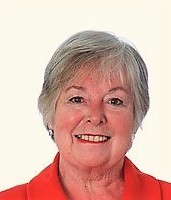The European Commission originally planned to take all regulatory decisions centrally as an FDA (US Food and Drug Administration) of Europe. Its focus would be new chemical entities, about 20 or 30 new drugs a year. The Commission had no idea of the huge number of applications that would be involved, much less the workload which came with them including variations, pharmacovigilance, reclassification, advertising and packaging controls. PAGB knew that doing all this registration centrally would require enormous resources and OTCs would be well down the agenda. A bigger problem was the sheer diversity of the 15 member states that then made up the European Economic Communities (which was absorbed into European Union when it was established in 1993). Most restricted medicines to pharmacy supply. Many had no clear distinction between prescription and non-prescription products. There were limitations on advertising, TV and radio ads were cluttered with warnings. Simple harmonisation would have had a major impact in the UK.
In 1983, the UK had just become the first country in Europe to reclassify medicines from prescription to non-prescription status, switching non-sedating antihistamines, ibuprofen and hydrocortisone, there was a risk that would go into reverse. The PAGB vision was a system that preserved what we had and a framework that allowed the other countries to catch up – national regulatory systems with an overarching European framework of controls over legal classification, advertising and packaging information. We felt this would allow the European OTC market to evolve.
Over a year we convinced the Commission that it needed a different approach – but to fill the vacuum we needed to offer an alternative and gain support from other countries. There were plenty of hurdles to overcome to get this. We had to convince very restrictive countries that the normal classification of medicines was non-prescription, to make the case that if a product could be sold to the public then it could be advertised to the public, to show advertising did not encourage overconsumption and demonstrate that putting warnings in advertising reduced communication and confused people. We even had to argue that pictures of parts of the human body on packs was not harmful. Given that every country felt their system was perfect we couldn’t have made any progress without the research which PAGB companies agreed to fund, giving us a package of support material that in its day was ground breaking. (The research, which was undertaken in 1989, was entitled Information or Communication: A consumer study of TV advertising and assessed three approaches in communicating information – television advertisement, the advertisement plus ‘Always Read the Label’ and the advertisement plus detailed product information).
We needed one more thing. In the UK we were accepted as the voice of the industry. In Europe we were starting from scratch and we had a lot of stakeholders to persuade. We had to develop a communication plan to explain it all and armed with our trusty lobby booklet “Passport to Europe” we set out to sell the vision. From 1990 – 1992 the PAGB secretariat was on the road. We were regulars on every conference programme alongside European Commission officials, we held events in the European Parliament, we worked to gain support from the UK Government, and we used our membership of AESGP to promote our proposals throughout the industry and the regulatory community. We got to know the other countries well as we looked for partners to vote amendments through or to block proposals that were unacceptable. And we succeeded. We convinced the MHRA (known as the Medicines Control Agency at the time) that our research was valid, and they took our proposals forward as the member states thrashed out the detail. It was a challenging, but ultimately successful, campaign and we got the regulatory framework we wanted.
PAGB may well have to do this all over again as the UK will be forging a new relationship with the EU and with other trading partners. Some of the issues will be the same, others brand new but the PAGB approach of evidence based, well thought out positions that are coherently presented will be as valid as ever. I wish PAGB all the best for the future.
By Sheila Kelly, PAGB’s Chief Executive from 1990 – 2014



